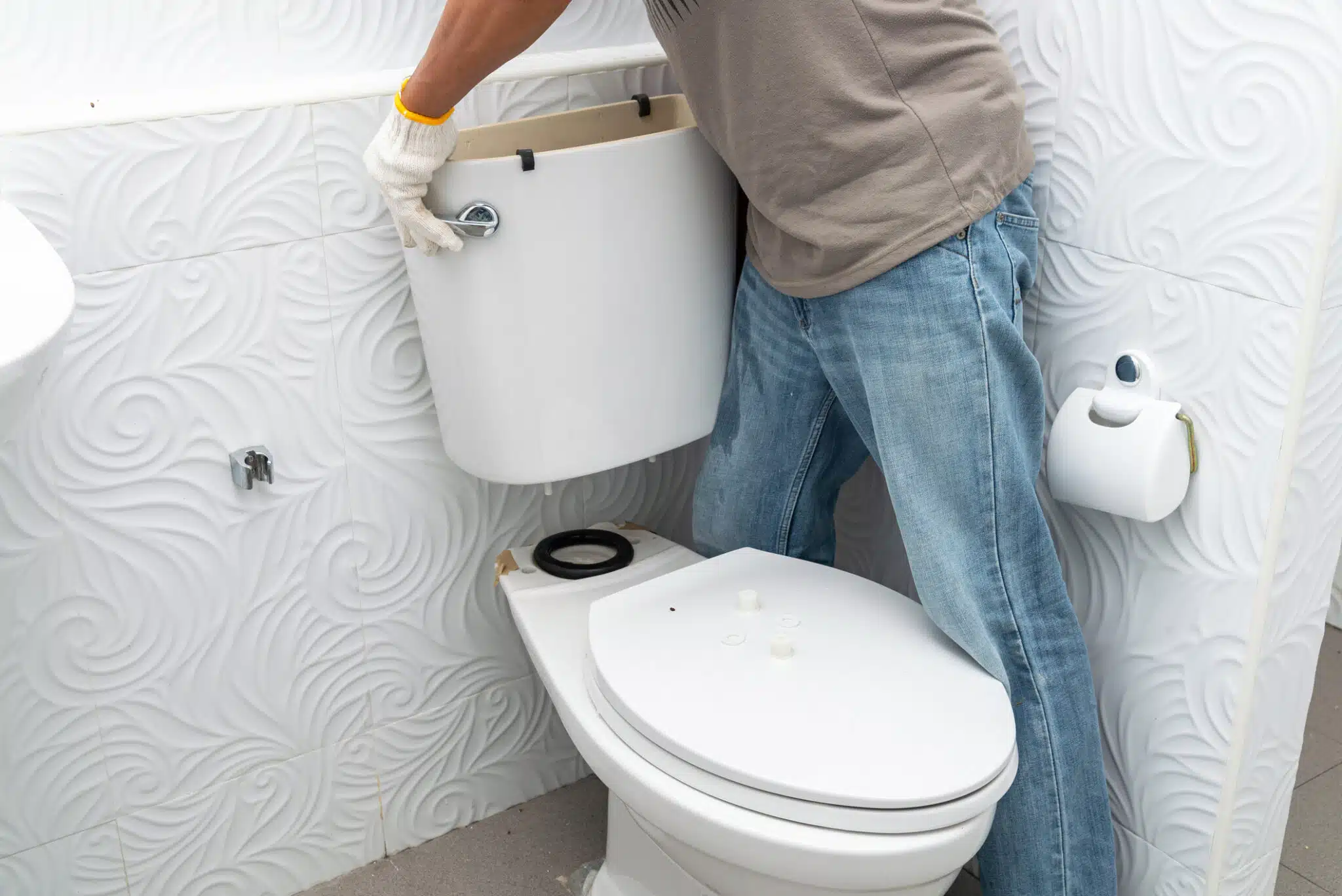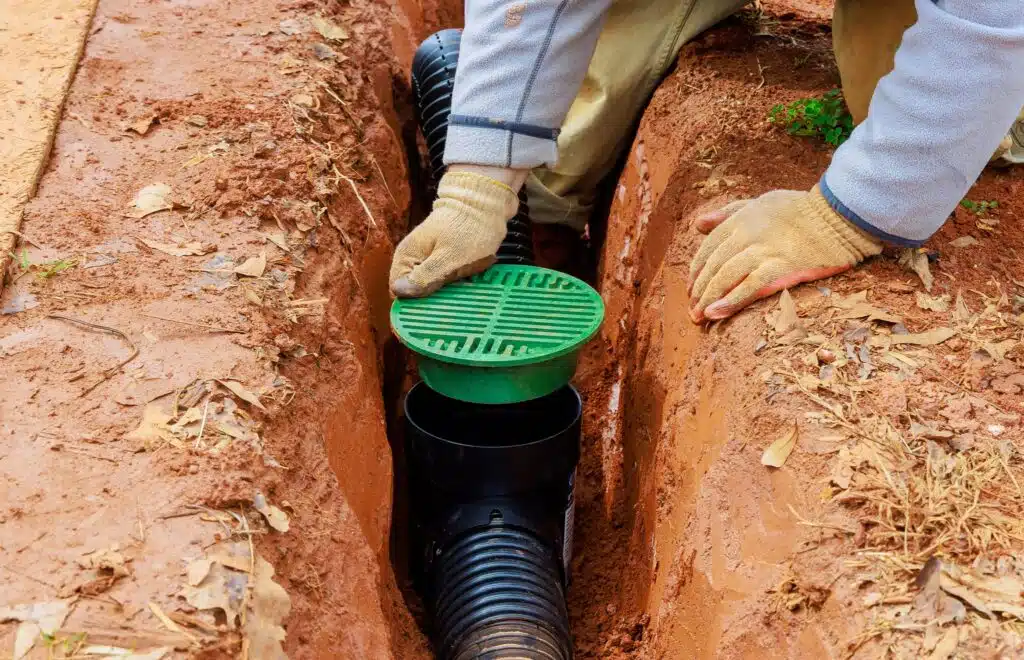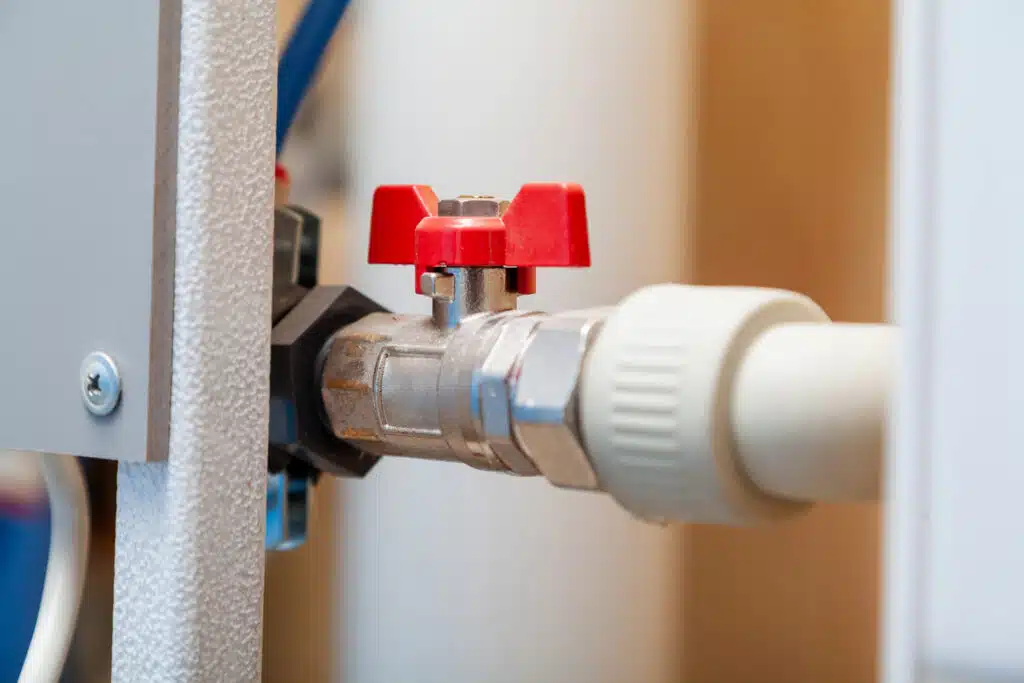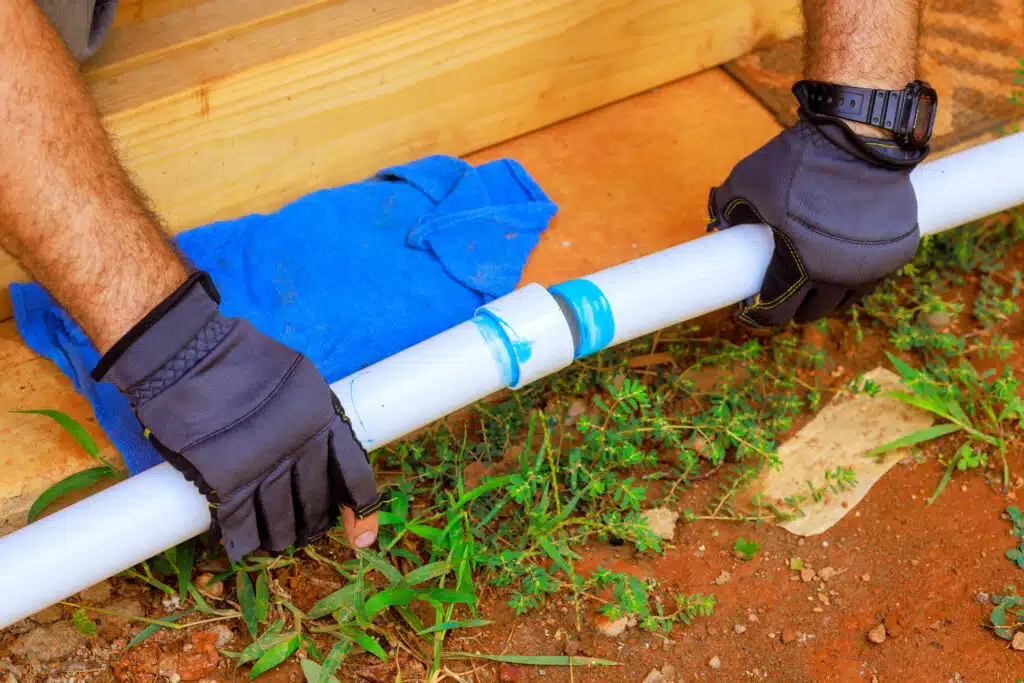Toilet installation might seem straightforward, but it often comes with its own set of challenges. Whether you’re upgrading your bathroom in Lancaster, PA, or installing a new toilet in a Harrisburg home, unexpected issues can arise. From leaks to improper fittings, these problems can turn a simple project into a headache. Understanding these common issues can help you navigate the process more smoothly.
One of the first steps in a successful toilet installation is ensuring you have all the right tools and parts. Missing even one small component can halt the entire project. This is especially true in areas like Lancaster, PA, where older homes might have unique plumbing needs. Being prepared can save you time and frustration.
Another common challenge is dealing with the existing plumbing. In cities like Harrisburg, PA, where the housing stock can vary widely in age, you might encounter outdated or incompatible plumbing systems. This can require additional adjustments or parts to ensure a secure and leak-free installation. Knowing how to adapt to these situations is crucial.
Lastly, achieving a proper seal and alignment is essential for any toilet installation. A poor seal can lead to leaks, while incorrect alignment can cause discomfort or damage to the toilet. Paying close attention to these details during the installation process can prevent future problems. With patience and careful planning, tackling toilet installation issues becomes a manageable task.
Choosing the Right Toilet for Your Bathroom
Choosing the right toilet for your bathroom is a crucial step that impacts the ease of toilet installation and long-term satisfaction. Consider the size, shape, and style that best fit your space and needs. In Lancaster, PA, where bathroom layouts can vary from historic homes to modern apartments, selecting a toilet that complements your bathroom’s aesthetics while meeting functional requirements is key. This decision not only ensures a smoother installation process but also enhances your bathroom’s overall appeal.
When selecting a toilet, it’s important to pay attention to the rough-in measurement, which is the distance from the wall to the center of the toilet flange. Getting this measurement right is essential for a hassle-free toilet installation. In Harrisburg, PA, for example, older homes might have non-standard rough-in sizes, making it important to measure carefully before making a purchase. A correct rough-in measurement ensures the new toilet fits perfectly in your bathroom without the need for extensive adjustments.
Water efficiency is another critical factor to consider when choosing a new toilet. Modern toilets offer a range of water-saving features that can significantly reduce your water bill and help the environment. Look for models with dual flush options or those certified by the Environmental Protection Agency’s WaterSense program. These features are not only beneficial for your wallet but also support Lancaster, PA’s, and broader environmental sustainability efforts.
Finally, consider the toilet’s flushing system and bowl shape for maximum comfort and efficiency. A powerful flushing system can prevent clogs and maintain cleanliness, while the bowl shape can affect comfort during use. Whether you’re in a compact city apartment or a spacious suburban home, choosing the right features will ensure your toilet installation leads to a comfortable, efficient, and reliable bathroom fixture. By keeping these factors in mind, you can make an informed decision that meets your needs and simplifies the installation process.
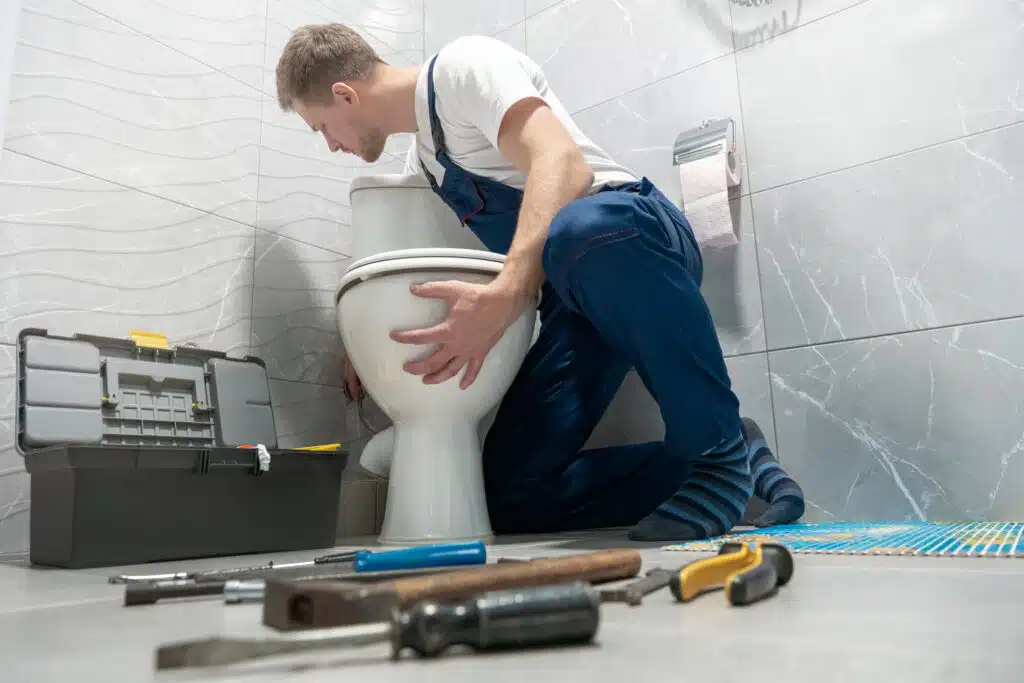
Preparing for Toilet Installation: Essential Tools and Materials
Before embarking on a toilet installation, gathering the essential tools and materials is a critical step. This ensures that the process in Lancaster, PA, or any other location, proceeds without unnecessary interruptions. A wrench, screwdriver, level, and measuring tape are fundamental tools you’ll need. Additionally, securing a new wax ring, toilet bolts, and supply line beforehand can prevent last-minute runs to the hardware store.
Understanding the importance of a good quality wax ring cannot be overstressed in toilet installation. This small but crucial component ensures a watertight seal between the toilet base and the drain. In Harrisburg, PA, where temperature fluctuations can affect plumbing, choosing a wax ring that can withstand these changes is wise. Failure to do so could result in leaks and water damage over time.
Preparing the area where the new toilet will be installed is just as important as having the right tools. This involves turning off the water supply, draining the existing toilet, and carefully removing it to avoid damage to the flooring. Cleaning the flange and surrounding area ensures that the new toilet sits properly and securely. It’s also a good opportunity to inspect for any signs of damage or wear that could affect the installation.
Finally, reviewing the installation instructions provided with the new toilet is a step that should not be skipped. Each model may have specific requirements or steps that are crucial for a successful installation. Taking the time to understand these instructions can save you from potential issues down the line. With the right preparation and attention to detail, toilet installation can be a smooth and straightforward process.
Overcoming Common Toilet Installation Challenges
Even with the best preparation, overcoming common toilet installation challenges requires patience and know-how. In Lancaster, PA, for instance, you might find that your new toilet doesn’t sit flush against the floor due to uneven tiling. This issue can be resolved by using shims to level the toilet before securing it. Ensuring the toilet is level is crucial for its function and to prevent leaks.
Another frequent hiccup occurs when the toilet flange is too high or too low. If you’re facing this in Harrisburg, PA, don’t worry. A flange extender can solve a too-low flange issue, while grinding down a high flange or using a thicker wax ring might be necessary. It’s important to address this to ensure a proper seal and avoid future problems.
Sometimes, after installation, you might notice your toilet running or leaking at the base. This often indicates a faulty seal or an issue with the installation of the wax ring. Replacing the wax ring and making sure it’s properly aligned with the toilet and flange can typically fix this issue. Regular checks for leaks after installation can save you from water damage and high water bills.
Lastly, dealing with clogs or poor flushing performance right after a new toilet installation can be frustrating. This might be due to blockages in the drain line or issues with the toilet’s internal mechanisms. A quick check and clearing of the pipes, or adjusting the toilet’s flush mechanism, can usually get things running smoothly. Remember, a successful toilet installation is about precision and addressing issues as they arise.
Ensuring Proper Sealing and Leak Prevention
Ensuring a watertight seal during toilet installation is paramount to prevent leaks and subsequent water damage. In Lancaster, PA, homeowners should prioritize the use of a high-quality wax ring. This component acts as a barrier between the toilet base and the plumbing system. Correct placement and pressure when setting the toilet ensure the seal’s integrity, mitigating the risk of leaks.
After installing the toilet, it’s crucial to test for leaks immediately. Fill the tank, flush several times, and observe for water escaping around the base or from the tank connections. In Harrisburg, PA, where water conservation is essential, detecting and addressing leaks early can save significant amounts of water. This step confirms the effectiveness of your installation efforts and the reliability of the seal.
Maintaining the seal over time is also important for the longevity of your toilet installation. Regularly check the base for moisture or signs of water damage. Any indication of a compromised seal requires prompt action, often involving resealing or replacing the wax ring. This preventative measure keeps the installation secure and functional, safeguarding your bathroom against potential water damage.
Finally, consider the impact of household chemicals on your toilet’s sealing components. Some cleaning agents can degrade the wax ring or other sealing materials over time. Choosing toilet and plumbing-safe products ensures the durability of the seal, contributing to a leak-free toilet. By taking these proactive steps, homeowners in Lancaster, PA, and beyond can enjoy a reliable and efficient toilet installation.
Toilet Installation Tips for Small Bathrooms
Toilet installation in small bathrooms requires careful planning. In Lancaster, PA, space constraints demand selecting compact models that do not compromise functionality. Measuring the available space before purchasing ensures the toilet fits without obstructing doors or cabinets. This foresight prevents common spatial issues, making the installation process smoother.
In Harrisburg, PA, optimizing for space can also mean choosing wall-mounted toilets. These models free up floor space, making the bathroom appear larger. During installation, it’s essential to ensure the wall is structurally sound to support the toilet. This approach not only saves space but also adds a modern touch to the bathroom.
Another tip for small bathroom toilet installation is to consider the door swing. If the door opens inward, it may collide with the toilet, hindering access. Reversing the door swing or installing a sliding door can resolve this issue. Such adjustments enhance bathroom functionality and accessibility, making the most of the limited space.
Lastly, lighting plays a crucial role in making small bathrooms feel bigger during a toilet installation. Strategic placement of lights can create the illusion of more space. Incorporating brighter, energy-efficient lights improves visibility and enhances the bathroom’s overall ambiance. This simple yet effective strategy can transform the feel of a small bathroom post-installation.
Adjusting for Uneven Floors During Toilet Installation
When tackling toilet installation in Lancaster, PA, uneven floors present a unique challenge. This common issue can cause the toilet to rock, leading to potential leaks or discomfort. Using plastic shims can effectively level the toilet, ensuring stability and a proper fit. It’s crucial to check the level across both the front and back of the toilet base to guarantee a secure installation.
After placing shims to adjust for uneven floors, trimming them to be flush with the toilet base is essential. This step prevents any unsightly protrusions and maintains the bathroom’s aesthetic appeal. Silicone caulk can then be applied around the base, offering additional stability and sealing any gaps. This method not only secures the toilet but also prevents water from seeping underneath, which could cause damage over time.
In Harrisburg, PA, homeowners should be mindful of the type of flooring in their bathroom when installing a toilet. Tile floors, for instance, may require different shimming techniques compared to vinyl or laminate. Understanding the specific needs of your flooring can lead to a more successful toilet installation. Consulting with a professional can provide insights into the best practices for your particular situation.
Finally, it’s important to regularly inspect the toilet once installed, especially in cases of uneven flooring. Checking for signs of movement or leaks can catch potential problems early. Regular maintenance ensures the longevity of your toilet installation, keeping your bathroom functional and leak-free. By addressing uneven floors properly, homeowners can enjoy a stable and reliable toilet without the worry of future complications.
The Importance of Water Supply Line Connection in Toilet Installation
In toilet installation, the connection of the water supply line is a step that demands precision. A secure and leak-free connection ensures the toilet operates efficiently. In Lancaster, PA, homeowners recognize the importance of this connection for the overall success of the installation. It prevents water waste and potential damage to the bathroom floor.
Properly attaching the water supply line requires the right tools and a careful approach. First, ensure the shut-off valve is in good condition and compatible with your toilet’s supply line. In Harrisburg, PA, it’s common to replace old valves during this phase to guarantee a fresh and reliable connection. This proactive measure can save you from future leaks and the hassle of emergency repairs.
Tightening the supply line connection too much can be as problematic as leaving it too loose. A balanced approach is necessary to avoid damaging the valve or the line. A wrench should be used with care to secure the connection without over-tightening, which could lead to cracks or leaks. This step is crucial in ensuring the longevity and reliability of your toilet installation.
Finally, testing the water supply line connection after installation is essential. Turn on the water supply and observe for any signs of leakage at the connection points. This test confirms the effectiveness of your installation work and gives you peace of mind. Regular checks over time also help catch any issues early, maintaining the efficiency of your toilet installation.
How to Test Your New Toilet for Efficient Performance
After completing the toilet installation, testing for efficient performance is a crucial step. In Lancaster, PA, homeowners should start by conducting a flush test to ensure the toilet operates smoothly without any hiccups. This involves flushing the toilet several times to check for consistent water flow and effective waste removal. Observing the flush mechanism’s response helps identify any immediate issues that need addressing.
Next, checking for leaks around the base and the tank is essential. Even in Harrisburg, PA, where plumbing systems might be newer, ensuring there are no water escapes is vital for maintaining a dry and damage-free bathroom floor. A visual inspection can reveal any moisture that might indicate a need for further sealing or adjustments. This proactive approach prevents water damage and promotes a long-lasting installation.
Listening for unusual noises during and after flushing can also provide insights into the toilet’s performance. Any sounds out of the ordinary, such as hissing or gurgling, might suggest internal issues with the plumbing or the toilet mechanism itself. Identifying these sounds early allows for timely interventions, ensuring the toilet operates quietly and efficiently.
Finally, monitoring the water level in the bowl and the tank after each flush is crucial for spotting any inconsistencies. A stable water level indicates a well-functioning toilet, crucial for effective waste disposal and odor prevention. Regular checks help maintain optimal performance, making toilet installation a successful addition to your bathroom.

Frequently Asked Questions
What tools are needed for toilet installation?
For a smooth toilet installation, you’ll need a few key tools. Start with a wrench and pliers for tightening bolts and nuts. A screwdriver is essential for securing the toilet to the floor. Lastly, a level ensures the toilet sits flat and stable, preventing future issues. With these tools, you’re well-equipped to tackle the job.
How to fix a leak after toilet installation?
Fixing a leak after toilet installation starts with identifying the source. Tighten the bolts connecting the toilet to the floor if they’re loose. Replace the wax ring if the leak persists, as it may be faulty. Always ensure the toilet is level to prevent future leaks.
What are common toilet installation mistakes?
Common toilet installation mistakes include not checking for leaks right away. Many forget to align the toilet precisely with the floor flange. Over-tightening bolts can crack the base, a costly error. Lastly, neglecting a new wax ring compromises the seal, leading to leaks.
How long does toilet installation take?
Toilet installation typically requires a few hours from start to finish. Beginners might need extra time to familiarize themselves with the process. Experienced DIYers or professionals often complete it faster, thanks to their expertise. Planning and having the right tools ready can streamline the entire installation, making it smoother and quicker.
Can toilet installation cause water pressure issues?
Toilet installation can indirectly affect water pressure in your home. If the shut-off valve is not fully opened post-installation, it restricts flow. Also, clogged pipes during the process can reduce pressure elsewhere. Ensuring valves are open and pipes are clear will maintain steady water pressure.








